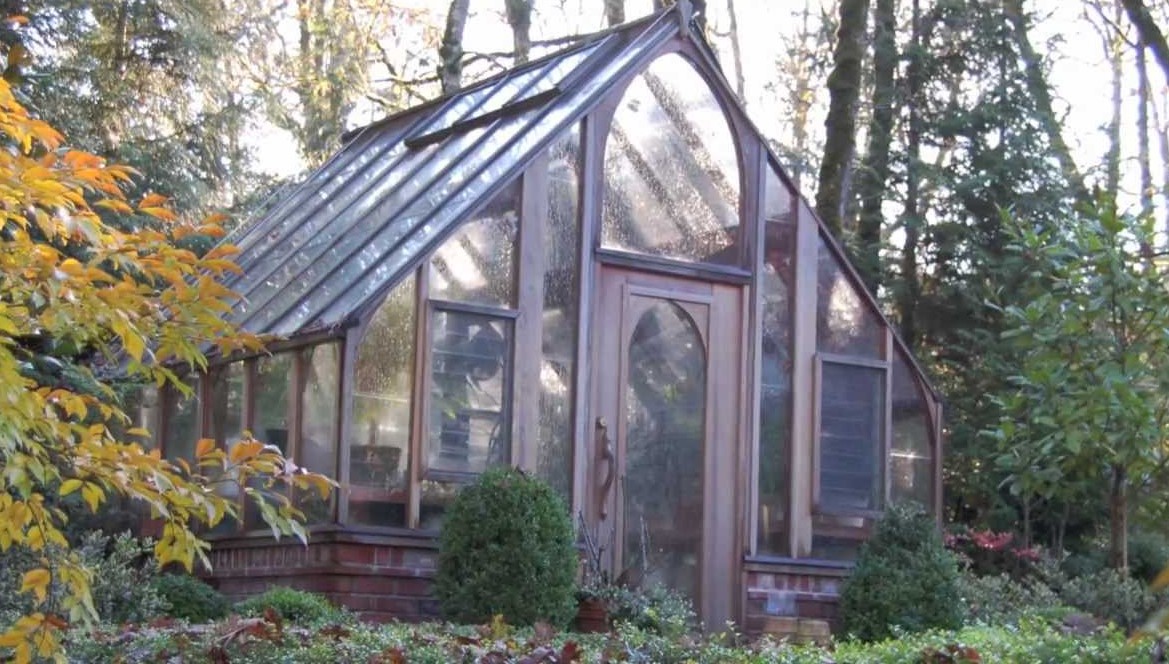
A Gothic style greenhouse is a type of greenhouse that is designed in a Gothic architectural style, characterized by its pointed arches, steeply pitched roofs, and intricate tracery. Gothic architecture originated in the Middle Ages and was used primarily in the construction of churches, cathedrals, and other religious buildings. In the 19th century, the Gothic style became popular in the design of greenhouses, which were built to house exotic plants and flowers.
Gothic style greenhouses typically feature ornate ironwork, large panes of glass, and curved or pointed roofs. They are often constructed using cast iron, which allowed for the creation of elaborate tracery and intricate details. These greenhouses were popular in the Victorian era, and many examples can still be found in botanical gardens and private estates around the world. They are prized for their beauty and historic significance and are often considered works of art.
A Gothic style greenhouse is a unique and beautiful structure that offers many benefits to gardeners and property owners. Overall, the disadvantages of a Gothic style greenhouse are relatively minor and may not be a concern for all property owners. However, it is important to carefully consider the potential drawbacks before investing in this type of structure.
6 Advantages of a Gothic Style Greenhouse
Aesthetically Pleasing
A Gothic style greenhouse is a work of art that adds a touch of elegance and sophistication to any garden or landscape. Its intricate design and ornate ironwork create a beautiful focal point that can enhance the overall look of a property.
Better Light Penetration
The steeply pitched roof of a Gothic style greenhouse allows more sunlight to penetrate the glass panes, providing better light conditions for plants that require high levels of light.
Increased Ventilation
The pointed arches in a Gothic style greenhouse allow for better air circulation and ventilation, which can be crucial for maintaining a healthy growing environment for plants.
Durability
Gothic style greenhouses are often built using cast iron, which is a highly durable material that can withstand harsh weather conditions and last for many years.
Historical Significance
Gothic style greenhouses have a rich history and cultural significance, which can add a sense of tradition and heritage to a property.
Versatility
Gothic style greenhouses can be used for a variety of purposes, from growing plants and vegetables to serving as a conservatory or recreational space.
5 Disadvantages of a Gothic Style Greenhouse
Cost
Gothic style greenhouses are often more expensive to build than simpler, more utilitarian designs. The intricate details and ornate ironwork require skilled craftsmanship and high-quality materials, which can drive up the cost.
Maintenance
The elaborate design of a Gothic style greenhouse can make it more difficult to maintain than a simpler design. The ironwork and tracery may require regular cleaning and upkeep to prevent rust and corrosion.
Space Limitations
The pointed arches and steeply pitched roof of a Gothic style greenhouse can limit the usable space inside the structure. This can make it more difficult to grow certain types of plants or accommodate larger equipment.
Limited Insulation
The large glass panes that are characteristic of Gothic style greenhouses can make it difficult to regulate temperature and humidity levels. This can be especially problematic in extreme weather conditions.
Historical Significance
While the historical significance of a Gothic style greenhouse can be a benefit, it can also be a drawback. Some property owners may prefer a more modern, minimalist design that does not have the same cultural or aesthetic associations.
Related Articles & Free Email Newsletter Sign Up
4 Things You Need to Know Before Building a Greenhouse
Good Options for a Beginner Greenhouse




Comment here